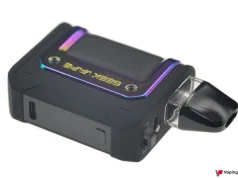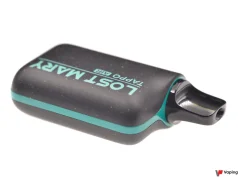
In a recent article published in the Internal Journal of Environmental Research and Public Health, the scientists of Altria’s R&D department present their research on secondhand exposure from e-vapor product use.
Leaded by Dr Ali A. Rostami, the research team basically conceptualized a mathematical model to evaluate physical and thermodynamic interactions between aerosol, vapor, and air. The model is also able to account for variability in exhalation. The output of the model is an estimate of air level of constituents as a function of time in a well-mixed confined environment.
In vaping science, second-hand refers to what is exhaled in air by a vaper while third-hand refers to the aerosol deposited on the surfaces in a room. Mainstream is what is directly produced by the vaporizer.
Modelling, an alternative to direct measurements
As an alternative to direct measurement, computational modelling offers a infinite range of settings including liquid composition, device performance, and user behaviors, space characteristics., The authors choose the ideal case of a closed room to validate their well-mixed model, with, in a first experiment, aerosols emitted from a vaping machine and exhaled by participants, in a second experiment.
 Without entering in too many details of the computation procedure, one can say that the well-mixed model requires input parameters (indoor space size and ventilation rate, air temperature and humidity, properties and rate of aerosol released into the indoor space, and thermodynamic properties of the constituents of interest), makes calculations and returns output parameters, here the distribution with time of ambient concentrations of nicotine, propylene glycol or glycerine.
Without entering in too many details of the computation procedure, one can say that the well-mixed model requires input parameters (indoor space size and ventilation rate, air temperature and humidity, properties and rate of aerosol released into the indoor space, and thermodynamic properties of the constituents of interest), makes calculations and returns output parameters, here the distribution with time of ambient concentrations of nicotine, propylene glycol or glycerine.
A simple approach susceptible to be complicated to address other topics
The well-mixed model is the simplest approach to determine concentration of particles in containment. The authors also work on a “distributed model” that can accurately capture the temporal and spatial mixing process (size distribution of aerosol droplets with time ans space) and even more complex developments of their “distributed model”. Computational Fluid Dynamics modelling is an approach used to model gaz containment in the nuclear domain, for example.
The manuscript could have been clearer on what is imposed by and what is left free. Another criticism is that the comparison of simulations with experimental data is only achieved for nicotine. Hence, their distributions of propylene glycol and glycerol with time is just speculative. It makes us to believe that the calibration parameters remain to be adjusted to improve reproducibility.
Next steps will probably be to follow the transformations that undergo certain compounds to account, for example, for the production of acrolein or formaldehyde in the aerosol during heating of the e-liquid, or for oxidation and other degradation processes.
Compliance with US EPA
The main strength of their approach is that the model is conceived in compliance with the US Environmental Protection Agency requirements. The authors pinpoint that their research may be used to assess the level of non-user exposure over time: in other word, secondhand vaping.
It confirms that Altria is actively involved in research on exposure and health effects from second- and third-hand exposure to e-cigarette constituents, in response to a declaration of interest issued by the FDA after the three workshops on vaping products the Agency sponsorized with the NIH. But Altria in not the only Big Tobacco company to work on the project, Lorillard and Fontem Ventures recently showed technical skills in the domain of indoor air quality.
Dr Konstantinos Farsalinos, who was also editor of the journal, notices “I am sure every tobacco company has the ability to perform the analytical part of the EU.” As an active researcher who published a lot on this domain, he specifies that determining aerosol composition “can be difficult depending on what you want to analyze“, he warns that “the procedure needs a lot of care, because dry puffs are very easy to happen in the lab.“.
Collaboration between the US FDA and Big Tobacco companies
In the current regulatory context, market analyses reveal that some Big tobacco companies are well prepared to face the regulatory challenge the US FDA is imposing to e-cigarette manufacturers. And in this run, Altria is far from being left behind.
Ali A. Rostami, Yezdi B. Pithawalla, Jianmin Liu, Michael J. Oldham, Karl A. Wagner, Kimberly Frost-Pineda and Mohamadi A. Sarkar, 2016. A Well-Mixed Computational Model for Estimating Room Air Levels of Selected Constituents from E-Vapor Product Use. Int. J. Environ. Res. Public Health, 13(8), 828; doi:10.3390/ijerph13080828











